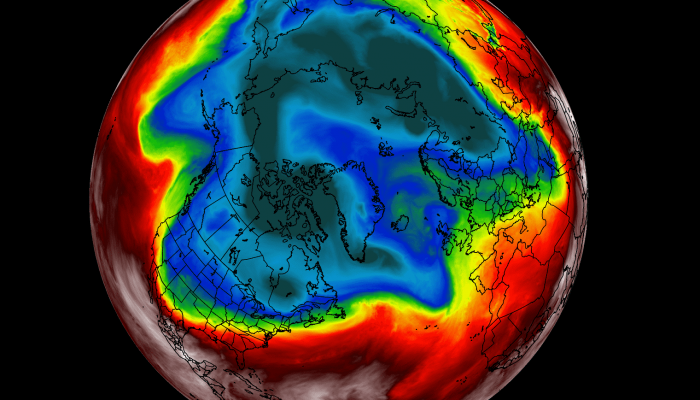From Severe Weather EU, February 18:
Spring weather mode will return in late February and early March for parts of Europe and the United States, as the Polar Circulation now faces a power-up
Winter weather has slowly reached its peak, and we are now starting to see the first signs that Spring is starting to awaken. Polar circulation is changing, trying to strengthen, bringing us some warmer weather in the coming weeks.
But it is not so simple to change the weather seasons. It takes a lot of energy, and thankfully, the weather is full of energy. As you will see, the same power that provided cold arctic outbreaks across the United States and Europe will now aim to awaken Spring weather.
POLAR CIRCULATION AND OUR WEATHER
Every winter we hear a lot about the jet stream, Polar Vortex, and polar circulation. They are all part of the same system, having a direct influence on our weather.
The example image below features all in one, as it shows the temperature at around 4km altitude. It nicely outlines the main core of the polar vortex over the hemisphere (cold colors). The jet stream is usually found on the boundary between the warm and the cold air masses.
We produced a high-resolution video forecast of this polar circulation, where you can see in great detail how this large system works, driving the pressure systems and our weather....
*****
... To keep a better track of all these processes, a simple weather index was invented, called the Arctic Oscillation (AO). This is very similar to a stock market index on Wall Street, as it also goes (oscillates) up and down.
The Arctic Oscillation is simply derived from the pressure anomalies over the North Pole. When high-pressure rules over the polar regions, the AO goes negative. And when low-pressure dominates the Polar regions, the AO is positive, meaning a stronger polar circulation.
Below we have a very simple schematic of the Arctic Oscillation (AO). The positive AO means a strong jet stream and strong circulation. It locks the colder air into the Polar regions, with mild/warm conditions prevailing in the mid-latitudes. It opposite in the negative AO mode....
....MUCH MORE
